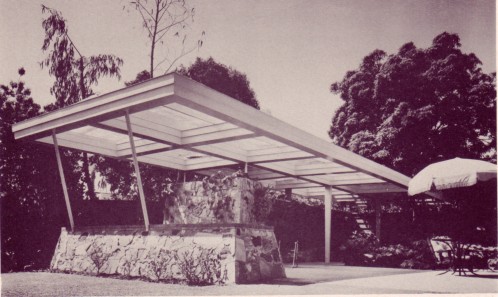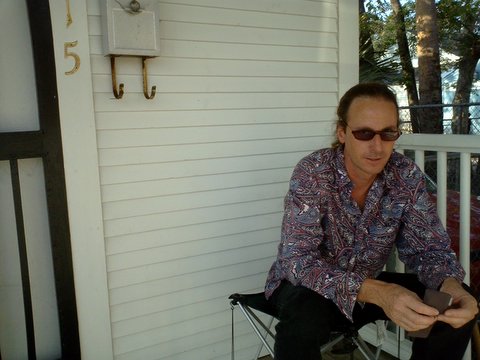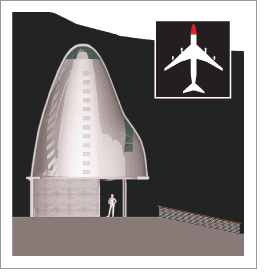Schwarz
View current page
...more recent posts
One of the Crescent City's most notable New Urbanism proponents is Pres Kabacoff, chief operating officer of Historic Restoration Inc., a development company principally known for converting unused industrial dinosaurs, such as the American Can Co. and the Federal Fiber Mills buildings, into apartment hives, with coffee shops, restaurants, dry cleaners, wine shops, workout centers, swimming pools and other on-site yuppie amenities -- a sort of old urban/New Urban synthesis.times-picayune
But Kabacoff's post-Katrina vision includes more than inner-city conversions. His dreams run to a series of 10-acre, freshly built, densely populated New Urban enclaves between downtown New Orleans and Armstrong airport -- each of them a bit like one of his more controversial accomplishments: the conversion of the old St. Thomas public housing site into River Garden apartments, a mixed-income development replete with its own Wal-Mart Supercenter and, one day, a nursing home.
cargo culture
the jazz church at citicorp is the kind of multi/non denominational sacred space that i would envision for the ground zero memorial. no propaganda. just a place to pray and no one telling you what to play.
The new St. Peter's church building is shaped abstractly like two hands held together in prayer, with large vertical windows offering passersby glimpses into its interior and the Erol Beker Chapel that contains a large sculptural wall by Louise Nevelson. The church was well known for its jazz programs under the Rev. Ralph E. Peterson, and those programs have continued after its rebuilding.
Frank Gehry's forthcoming performing arts center at the World Trade Center site, already indefinitely delayed, looks like it may get Freedom Center'd (née Drawing Center'd). David Dunlap reports in the Times that at the Lower Manhattan Development Corporation board meeting yesterday, he got the inkling that—since construction costs are rising—the performing arts center might have to duke it out with the memorial for funds.TBTM poll: which would you choose?
If given a choice between building a "cultural arts center" OR building the 9/11 Memorial and 9/11 Memorial Museum at the World Trade Center site, which would you choose?
BETHLEHEM, Pa. A full decade after the shuttering of Bethlehem Steel’s flagship plant, officials are rolling out their latest proposal to transform and resurrect the nation’s largest abandoned industrial site: an arts complex called “SteelStax.”
The 17-story blast furnaces that have dominated the city’s skyline for a century would tower over new performance spaces for music, dance and theater.
big D MCMs
bravia super-ball ad
via zoller

sofa thread
the silver paintings
This is a dangerous moment for an architect. The cultists who have followed her for so long have a habit of getting nervous once the public come to enjoy what was once their private preserve. In some quarters, Daniel Libeskind's critical reputation has never recovered since he made the egregious mistake of becoming popular. Will Zaha Hadid suffer the same fate?
At Christie's on Tuesday night, a photograph by Richard Prince broke two records: for his works at auction, and for any photograph at auction. Last night's sale featured three works by the artist, all from Mr. Mugrabi. "Untitled (Cowboys)," from 1993, one of Mr. Prince's images of the Marlboro Man, was expected to sell for $600,000 to $800,000. What a difference four years - and 24 hours - can make. While an an 1989 cowboy photograph set the records at Christie's, selling for $1.2 mllion, there was no bid in sight for last night's cowboys. A 1980 fashion photograph also failed to sell.
Mr. Prince fared better with one of his paintings of naughty nurses. Aby Rosen, the real estate developer, bought "Mountain Nurse" (2003) for $744,000, in the middle of its $600,00 to $800,000 estimate.
her noise
oh my god
via vz
Atlanta — The Italian architect Renzo Piano is in the process of rewriting the book on American museum architecture. Well, it might be more accurate to say he's rewriting the book on museum expansions: His firm, Renzo Piano Building Workshop, has additions in the works at a remarkable number of the most prominent museums in the country, including the Whitney in New York, the Gardner in Boston and the Art Institute of Chicago. And, of course, there's his reconfiguration of the Los Angeles County Museum of Art and its muddled collection of buildings along Wilshire Boulevard, the first phase of which will open in 2007.
Planners from around the country have already descended on the Gulf Coast region, beginning a series of charrettes to shape the future of land use and community development in the devastated region. Yet are the local residents -- especially those who need the most help -- ready to make plans? Leonardo Vazquez argues that more careful, long-term planning is needed to ensure that current residents and refugees alike are given the stake and voice they need in the rebuilding efforts.
The only Prairie-style house Frank Lloyd Wright designed and built in Ohio opened its doors to the public for the first time on Oct. 15 after undergoing a $5.8 million restoration.
Francie Rehwald wanted her mountainside house to be environmentally friendly and to be "feminine," to have curves. "I'm a gal," says the 60-year-old retiree.
Her architect had an idea: Buy a junked 747 and cut it apart. Turn the wings into a roof, the nose into a meditation temple. Use the remaining scrap to build six more buildings, including a barn for rare animals. He made a sketch.
Rebuilding any city is a complicated business. As soon as the flood waters began to subside in New Orleans, suggestions for what to do with a devastated city started coming from everywhere. Two local citizens suggest twenty points of entry.via metropolis
speaking of scams. some may know that schwarz was born in new orleans way back in 1955. my dad told me about the the "I bet i know where you got dem shoes" routine, so i was prepared when i was walking down the bowery one day and this guy came up and said "I bet i know where you got dem shoes."
you never know whats in a factory sealed box. i know of several people who bought a factory wrapped brick in a sony box off the street here in nyc in the 80's. im sure that scam is still around and what they really bought was an invaluable life lesson for one hundred dollars which is cheep if you dont do it twice. buyer beware. check out this nasty factory wrapped shit from a new orleans metro blogger.

yes, we are following fellow blogger Jim Louis's posted reports from new orleans on his email from nola blog.
we are also posting the digital photo e.mail attachments he's sending in. mostly images of his neighborhood in the fourth ward.
NEW ORLEANS, Nov. 7 - Something once unimaginable has begun to happen here: the United Parcel Service is delivering again downtown. At Langenstein's grocery, celery and pork chops are moving out the door, and revelers spill out of the Magazine Street bars on Friday nights.
But just a mile away, workers are struggling to restore some flood protection to the city, which would barely stay dry in even a modest tropical storm. Tens of thousands of homeowners, facing six-figure repair bills for their rotting houses, are unlikely to get more than a fraction of that from the government. As phones ring in empty offices, even the shrimp business can barely find customers, and the economy remains comatose.
[...]
Will New Orleans be granted a vastly strengthened flood protection system - at a cost of up to $20 billion - or will it be told to allow low-lying residential neighborhoods to return to marshland? Will the city have to take control of thousands of houses to restore them - at a cost that no one has calculated - or will it have to tell thousands of evacuated residents not to return?
Every major decision seems to rely on another decision that has to be made first, and no one has stepped in to announce what the city will do and break the cycle of uncertainty. Many residents and business owners will not return and invest without an assurance of flood protection, for example. But workers who could rebuild the levees and much of the rest of the city are hampered by the lack of housing.

